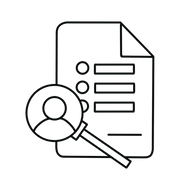Materials Characterization
To explore the possibility of a new tank design, I established a baseline for functionality through testing, then sourced potential materials to introduce and conducted a variety of tests to collect performance data on each.
HEADSPACE PRESSURE
In order to create a standard of performance, I wanted to measure the headspace pressure of the tank while in use. I sourced out a pressure sensor break out board and wrote an Arduino program to collect the data. I then set up a single syringe pump and tested existing pods. The same test set-up would also be used in the future for validating updated tank designs.
CRACKING PRESSURE & BUBBLE FORMATION
Once I had a baseline, I began doing research on materials with properties that might be relevant to a new design. I worked with global suppliers to source a wide variety of options and began collecting my own data on their effectiveness. One test that was important to determining applicability was finding the pressure at which air passes through the material while the device is in use, or the point at which a bubble will form through test oil. I brainstormed set-ups, 3D modeled parts, and effectively tested several material options.
CONTACT ANGLE
The last aspect of characterizing each material was to determine the contact angle of test oil on the surface, while both static and in motion, in comparison to our existing tank materials. This allows me to determine how oleophobic a material is and how it will perform while the device is in use. I utilized a keyence microscope for the majority of this testing.
Associate Mechanical Engineer
Continuum is a global innovation design firm that develops products, services, and experiences to improve people’s lives. My final co-op placement allowed me to work across the Mechanical and Electrical Engineering teams on several contracted projects, focusing on manufacturing development and validation. Due to the COVID-19 pandemic and government-mandated work-from-home order, the scope of my co-op was ultimately limited.
Mechanical Engineering Co-op
Ecosense Lighting is a start-up company focused on creating new technologies to change the way that the world views light. My second co-op placement allowed me to be a part of a fast-paced product development team, supporting existing products through feature additions, validation testing, and root-cause analysis. Furthermore, I got the opportunity to work on custom and next-generation products, designing for prototyping and manufacturing.
Mechanical Engineering
R&D Co-op
Haemonetics Corporation is a global leader in blood management solutions, producing a wide variety of devices and consumables primarily focused on blood processing systems and plasma collection. My first co-op placement allowed me to work towards product development across the mechanical, electrical and systems engineering teams as well as gain exposure to advanced laboratory procedures and nano-dispensing technologies.










